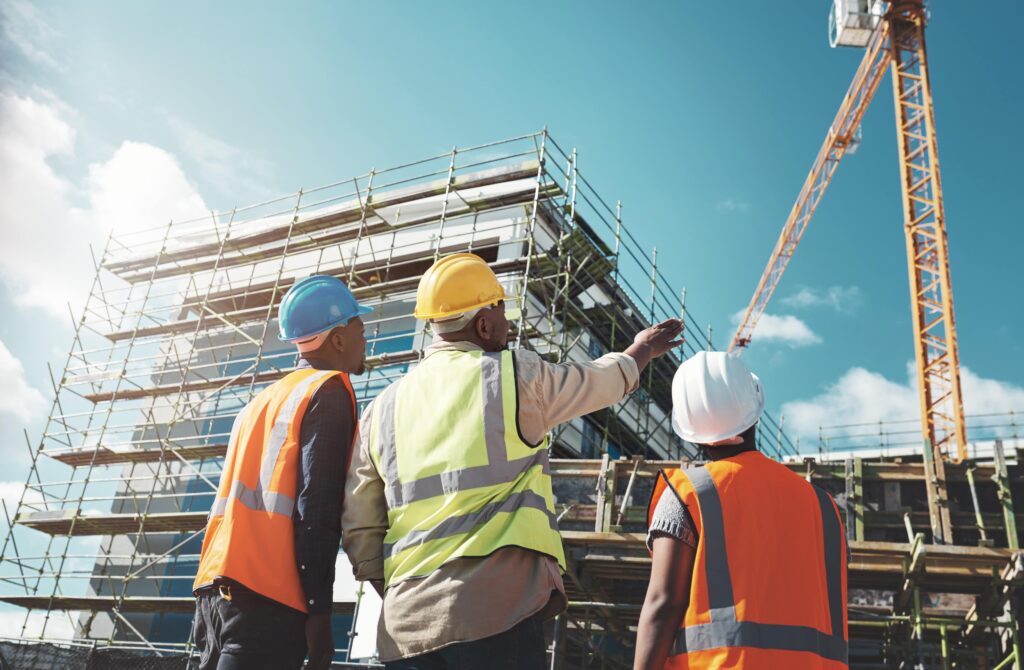What does the Building Safety Act mean for conveyancing?
The Building Safety Act 2022 has impacted the housing market, especially leasehold properties and, as a result, the conveyancing process has taken a hit – but why?
At GD Property Solicitors, we’ve looked into the Building Safety Act and what it means for the conveyancing industry. To find out why the Building Safety Act has impacted conveyancing solicitors, keep reading.
What is the Building Safety Act 2022?
The Building Safety Act 2022 is part of the building safety legislation that was introduced in the wake of the Grenfell disaster in 2017 in which 72 people died as a result of a fire. The UK government stated that it was committed to protecting leaseholders from the burden of remediation costs, and the act has introduced builder and government-funded schemes that reduce the costs for leaseholders.
The act is designed to give residents and homeowners more powers, rights and protections so that homes all over the country are much safer. The Building Safety Act 2022 overhauled existing legislation to create lasting change and make it clear how residential buildings should be constructed, maintained and made safe.
Three new bodies were created to provide oversight of the new regime: the Building Safety Regulator, the National Regulator of Construction Products, and the New Homes Ombudsman.

Impact on the conveyancing process
One of the key aims of the Building Safety Act is to enable long leaseholders – whose flats are affected by safety issues – to sell their flats. Thanks to the regulation changes made by the Act, the responsibility of fixing safety issues in old buildings falls on building owners (management companies, freeholders, etc.) instead of qualifying leaseholders.
Who is a qualifying leaseholder?
- Somebody who owns property in a high-risk building (one that is above 11 metres or five storeys and contains at least two dwellings)
- Somebody who owns property as their main home or owns no more than three UK properties
- Somebody who owned their leasehold property on February 14th 2022
The Building Safety Act protects some leaseholders from paying remediation costs on their property when the defect being remedied was caused as a result of fire or partial or total collapse. This is defined as a relevant defect and is the responsibility of the landlord or property owner. However, this applies where a lease was granted before February 14th 2022 or was granted for more than 21 years for a single dwelling contained within a ‘high-risk’ building.
Problems for property solicitors
The implementation of the Building Safety Act 2022 has brought fresh challenges for property solicitors and law firms involved in the conveyancing process. There is also a lot of concern from practitioners over the expectation to explain the complex requirements, potential risks, and possible financial liabilities to a building owner if they’re not experienced enough to do it effectively.
Conveyancers have raised concerns about the wording used in the legislation and the expectations put upon them.
The original legislation stated that a qualifying leaseholder would lose the protection of the act if they extended their lease, which meant they could be exposed to fire safety issues and remediation costs.
Fortunately, the Law Society ensured amendments were made to the Levelling Up and Regeneration Act 2023, closing the loophole. However, the Building Safety Act remains a concern for property solicitors because some professional indemnity insurers have advised against taking on these matters because of uncertainty around key elements of the legislation.
As a result of this uncertainty, the number of property solicitors willing to act on the sale or purchase of properties likely to fall within the remit of the act has reduced dramatically.
According to the Law Gazette, there has been a 25% fall in conveyancing transactions compared to the year before. There were 62 average annual transactions handled by property law solicitors in the last 12 months, down from 84 the year before.

Has anything changed?
Fortunately, there has been a positive update for conveyancing solicitors. Early in 2024, the Law Society published guidance offering an update that provides greater clarity for property solicitors working in the conveyancing process.
The updated guidance is designed to help conveyancing solicitors make sense of improvements to the legislation and covers a wide range of topics, including properties over 18 metres, blocks under 11 metres, fire safety remediation costs, the landlord’s certificate, higher-risk buildings, and more.
The update has provided solicitors with the necessary information to make informed decisions about working with residential leasehold conveyancing matters where the Building Safety Act applies.
Relevant building problems for conveyancing solicitors
Property solicitors must identify whether a property falls within the remit of the Building Safety Act 2022, as well as any other information needed for clients and lenders. A ‘relevant building’ which falls under the Building Safety Act is defined as one over 11 metres or five storeys or more high.
A conveyancing solicitor’s involvement starts with an appraisal of whether the property in question qualifies for this definition. For anybody purchasing a flat, the main concern is that the building it’s housed in has fire safety issues and the buyers themselves may be liable for repairs.
The Building Safety Act aims to address this issue, but if the processes set out within the Act are not followed – which can happen based on confusion – problems can surface. While one party’s solicitors may understand the new legislation, the other party may not, which can cause delays and confusion.
This increases the importance of new guidance and the need for secondary and primary legislation that amends the Building Safety Act 2022.

Timing and gathering of information
The timing that property solicitors work within is also key to not falling foul of the new legislation. For example, conveyancing solicitors acting for sellers need to ensure the leaseholder deed of certificate is served on the landlord. The landlord has four weeks to provide it and, if they don’t, the solicitor cannot recoup the cost of remedial works from the tenant. Meanwhile, a buyer’s solicitor has to pay attention to the landlord’s certificate sent by return because it states the remediation work that’s required.
Unfortunately for solicitors, many landlords don’t understand the cost and time issues.
The gathering of information throughout the conveyancing process is also important. To fulfil the requirements set out by the Building Safety Act 2022, collecting the relevant information has considerably slowed transactions down.
As a result, slow transaction times impact the profit margins of property solicitors working on the conveyancing process – something that’s already quite tight.
Lenders and conveyancing – the problems
Another issue facing conveyancing solicitors is the ‘part 2’ requirements of lenders set out in the Building Safety Act 2022. This section requires solicitors to confirm that the act’s provisions are all complied with. Conveyancers have pointed out that ‘part 2’ is a surveying point and outside their remit because they are incapable of checking this information.
Conveyancers believe that lenders are taking a more pragmatic approach and are asking too much of solicitors. Often, they’re asking for information outside of the solicitor’s control, making their job difficult, and ultimately slowing down the progress of a transaction.
In early 2023, the Conveyancing Association noted that individual ‘part 2’ requirements did not make it clear enough that the requirements can be ignored on buildings to which the Building Safety Act 2022 doesn’t apply.
Fortunately, in a consultation between the Law Society and UK Finance in July 2023, an amendment was made, making it clear that lenders’ ‘part 2’ requirements only apply where the flat is in a ‘relevant building’.
However, the Law Society wants more to be done. They want the onus to be placed on the lenders to satisfy themselves that the act has been complied with and that the lender cannot look to the conveyance to verify the validity of the leaseholder deed of certificate or landlord’s certificate.

Summary
The Building Safety Act 2022 has thrown up many issues for property solicitors during the conveyancing process. Whether it’s getting hold of the documents from landlords, confirming the ‘relevant building’, working with lenders or dealing with confusion over remediation work, the BSA 2022 has created a lot of problems for conveyancers.
At GD Property Solicitors, we know about these difficulties, but we’re blessed with a talented team of highly qualified, experienced property solicitors who can deal with such obstacles.
If you require the services of a high-quality, trustworthy and reliable conveyancing solicitor – who can offer competitive property solicitor fees – then don’t hesitate to get in touch with us today. You can call us at 0161 710 1786 or send us an email at info@gdlegal.co.uk.
Also, we offer a free, no-obligation instant quote on our website. Have a look now and speak to us.
